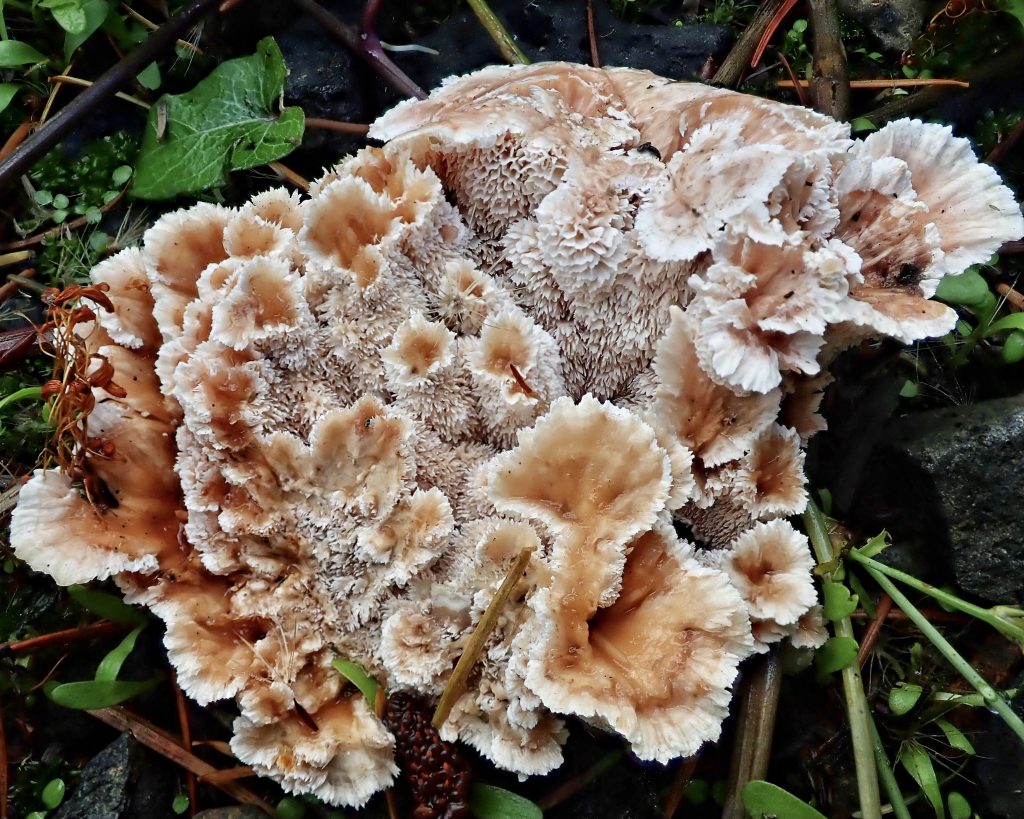
This fascinating polypore fungus would appear to have been a member of the family Meruliaceae, but seems to have been moved into the family Podoscyphaceae. In one form it is a rather pretty rosette of overlapping shelves, but in its more common form it is less aesthetically pleasing though more visually interesting, and appears to be a turned-inside-out version of its prettier siblings, with pores covering the whole surface, many of them oozing brownish red gunk. This is the ‘aborted’ form, or more pleasantly euphemistic, the cauliflower form. It doesn’t appear that there are answers to the question of why there is such dimorphism, and many fruiting bodies display elements of both forms.
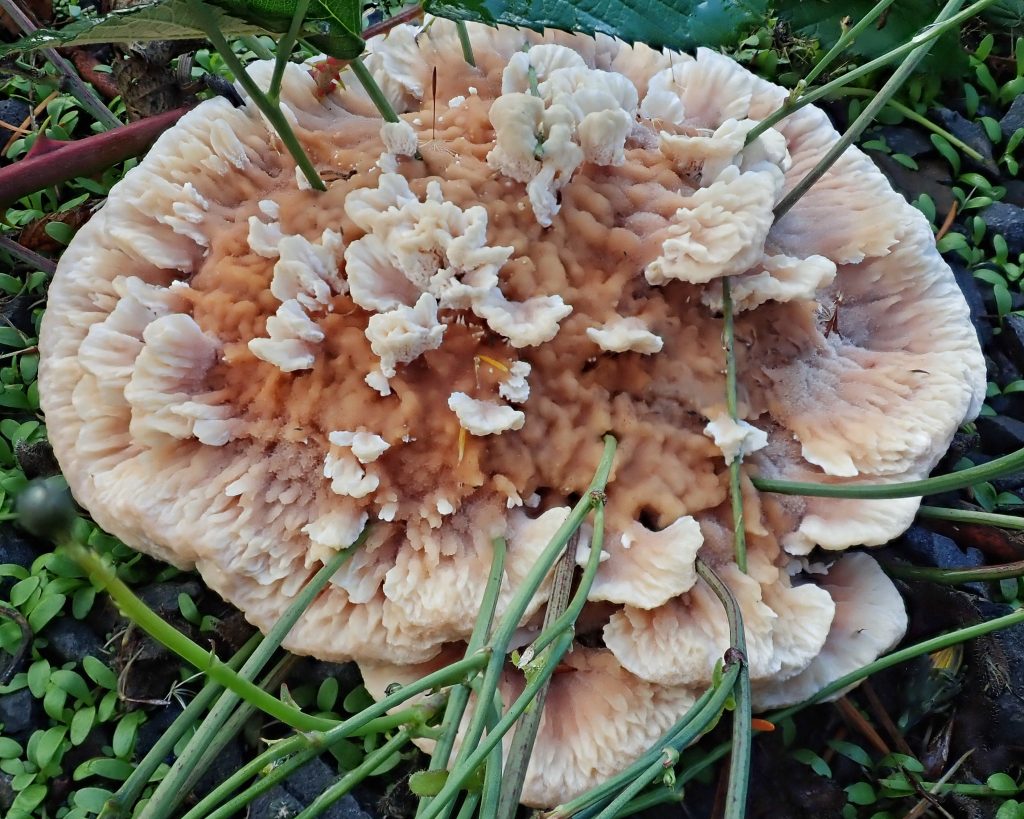
These are saprobes, meaning they decompose dead wood and absorb those nutrients. Most often they are found in conjunction with the roots of hardwoods, but they also associate with conifers, and can apparently be very common in relatively open areas with a lot of woody debris. As you can see in these photos the fruiting body will often engulf and surround the plants growing where it emerges. These were found in gravel alongside a gravel road, but there were trees there, mostly cottonwoods, until a big windstorm knocked them down, and the gravel was put down after the salvage logging equipment tore up the area.
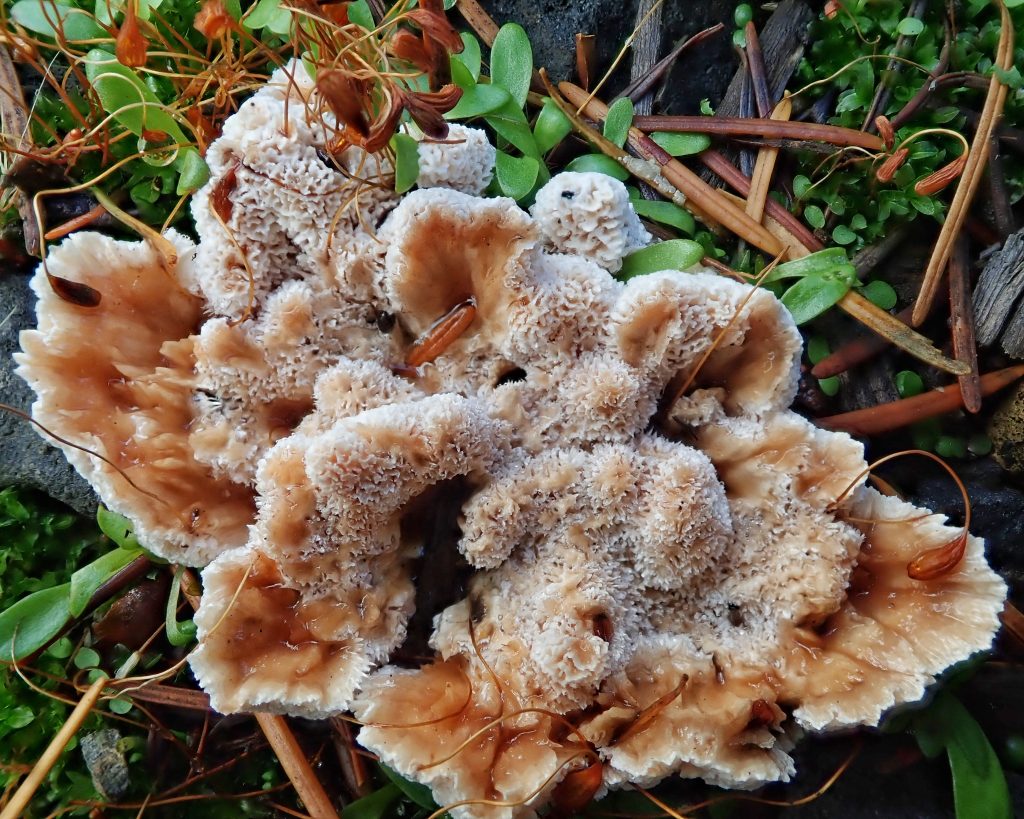
My nbo Morgan found some odd fungus a few days ago while walking their dog, and sent me a photo of one of the weirder looking ones. I had no idea what they were, and ran the photo through my Seek app to see if it would give me a starting point. To my surprise it gave me a species name, Abortiporus biennis. So we took our weekly walk at that location, a service road along a wetland in Longview, Washington, and found quite a few with various forms, and I was able to confirm that they were indeed Blushing Rosettes. The Seek app is far from complete (and hasn’t proved very useful for lichens or mosses), and its identifications aren’t always correct (and always need to be vetted), but a quality closeup photograph will usually produce at least a familial result for the organism, if not genus and even species, and I highly recommend it for any recreational naturalist.
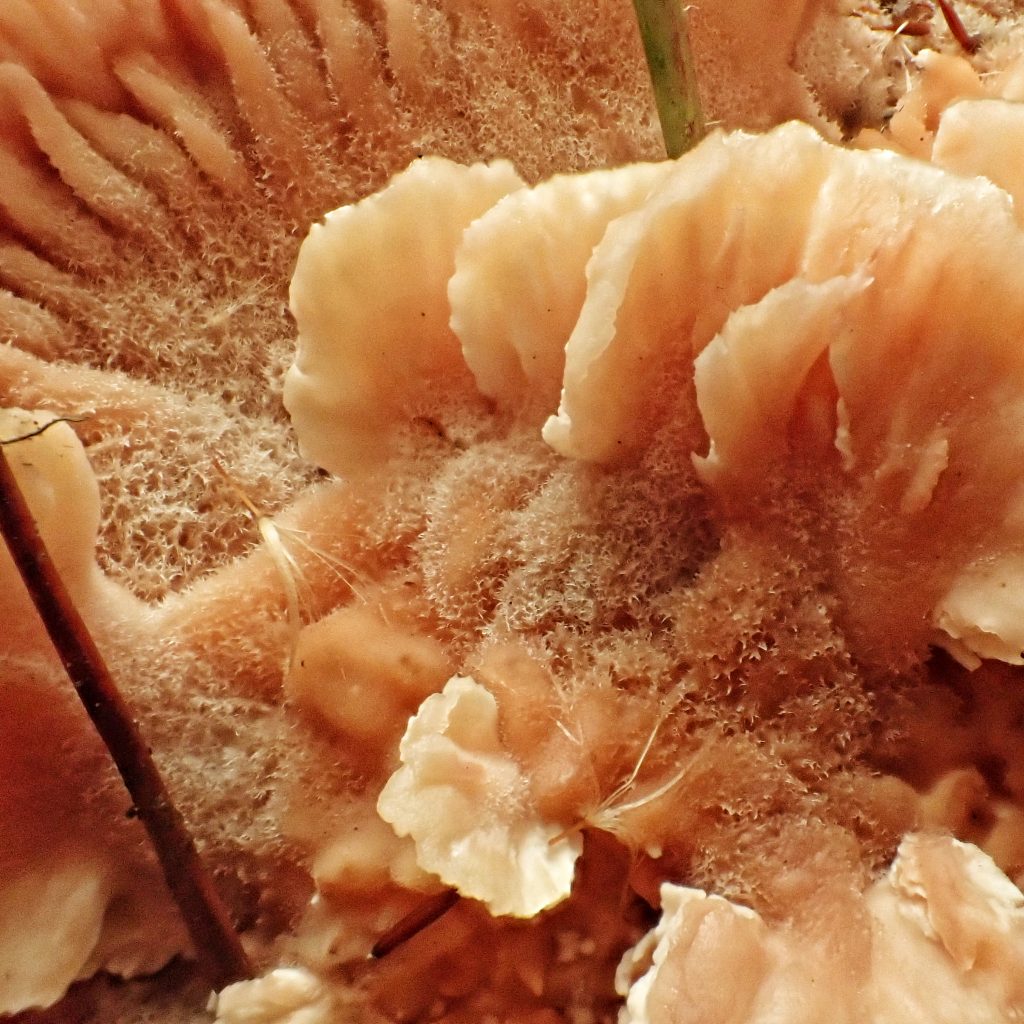
Description-Large (up to 8” across) polypore with a variety of shapes; may be fused rosettes or shelving clusters, or an amorphous blob of oozing pores, or even a short, wide finger like projection, as well as any combination thereof; pink to brownish, with a lighter and usually irregular margin; dorsal surface often tomentose (hairy), and knobby; pores whitish to pinkish, irregular, mazelike to angular, and can be found on any surface; stipe lacking or short, thick, and irregular.
Similar species–Hydnellum peckii has spines on the ventral surface; Bondarzewia mesenterica grows larger, is more fluted, browner, and never has pores on the dorsal surface; Polyporus tuberaster has a squamulose, rather than tomentose, dorsal surface; Albatrellus spp. never has mazelike pores.
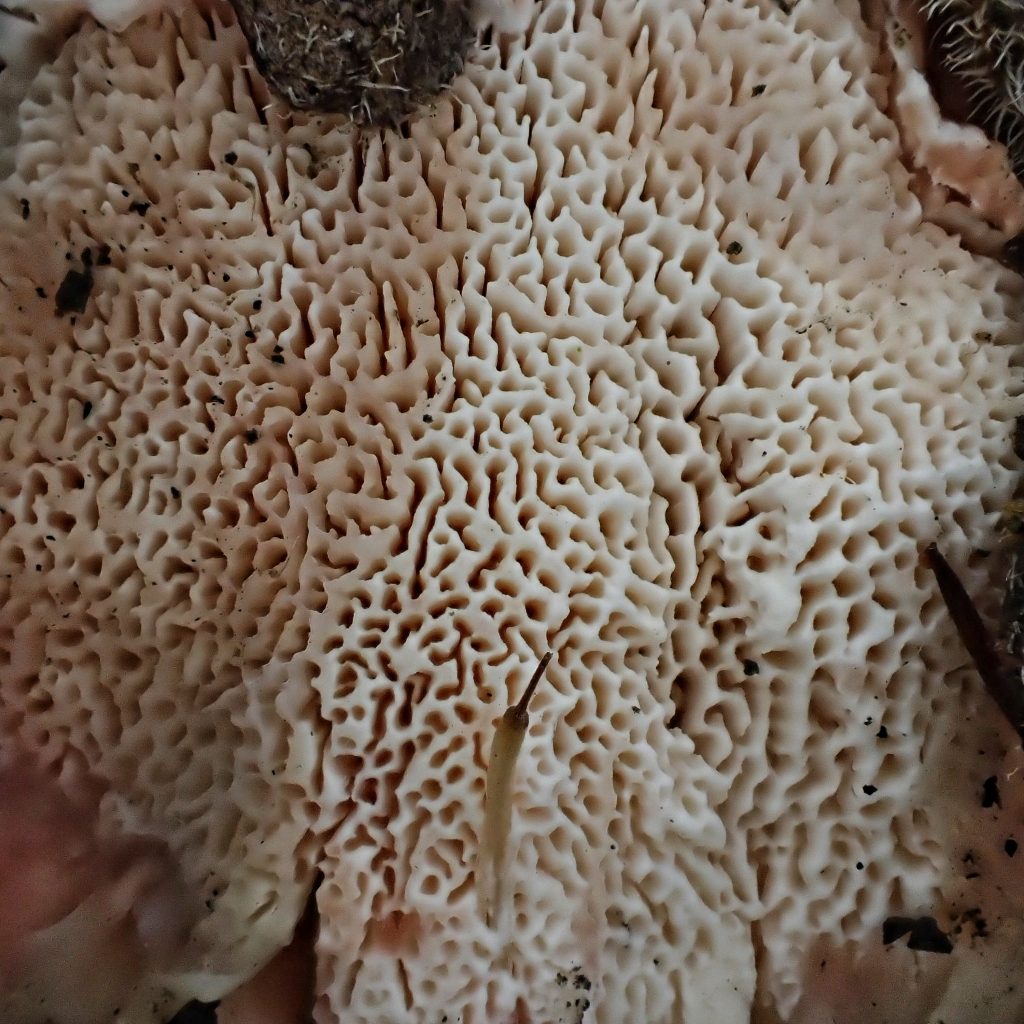
Habitat-Wooded and forested areas, although more common in disturbed ground than in deep forests.
Range-Temperate Northern Hemisphere; in our region it seems to be found primarily west of the Cascades.
Reproductive timing-Fruiting bodies usually form in the fall, although occasionally in summer in irrigated areas like parks and plantings.

Eaten by– Probably consumed by some taxa of fungus gnats and gastropods, but I can’t find any information specific to this species; generally considered inedible for humans, though I cannot ascertain whether that is a taste or a toxin issue.
Etymology of names–Abortiporus comes from the Latin for ‘born prematurely’ plus the Greek word for ‘pore’, and refers to the frequent forms that are a chaotic blob of oozing pores. The specific epithet biennis is from the Latin for ‘every two years’, although this fungi actually fruits every year.
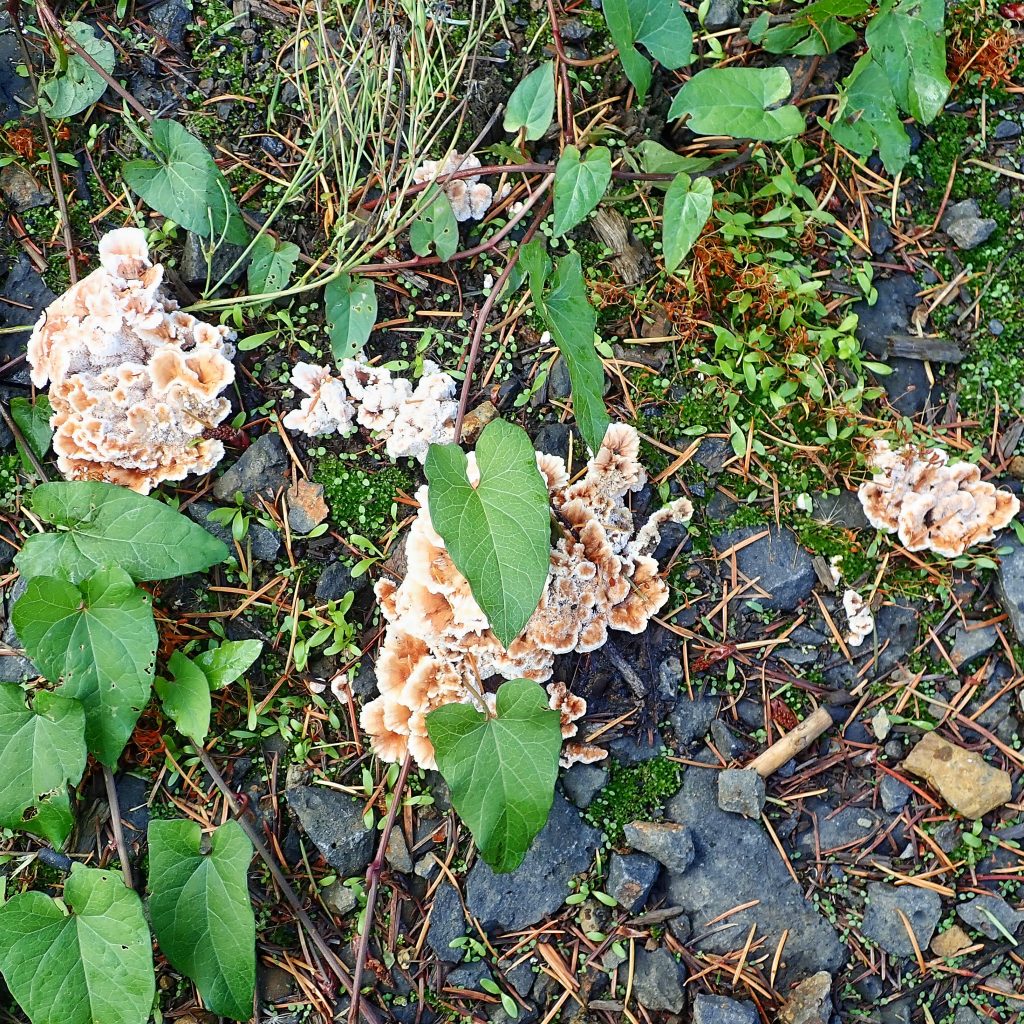
https://www.mushroomexpert.com/abortiporus_biennis.html
https://www.first-nature.com/fungi/abortiporus-biennis.php
https://arboriculture.wordpress.com/2016/11/12/two-interesting-saprotrophic-fungi-of-wood/amp/
https://www.mykoweb.com/CAF/species/Abortiporus_biennis.html
https://mycocosm.jgi.doe.gov/Abobi1/Abobi1.home.html
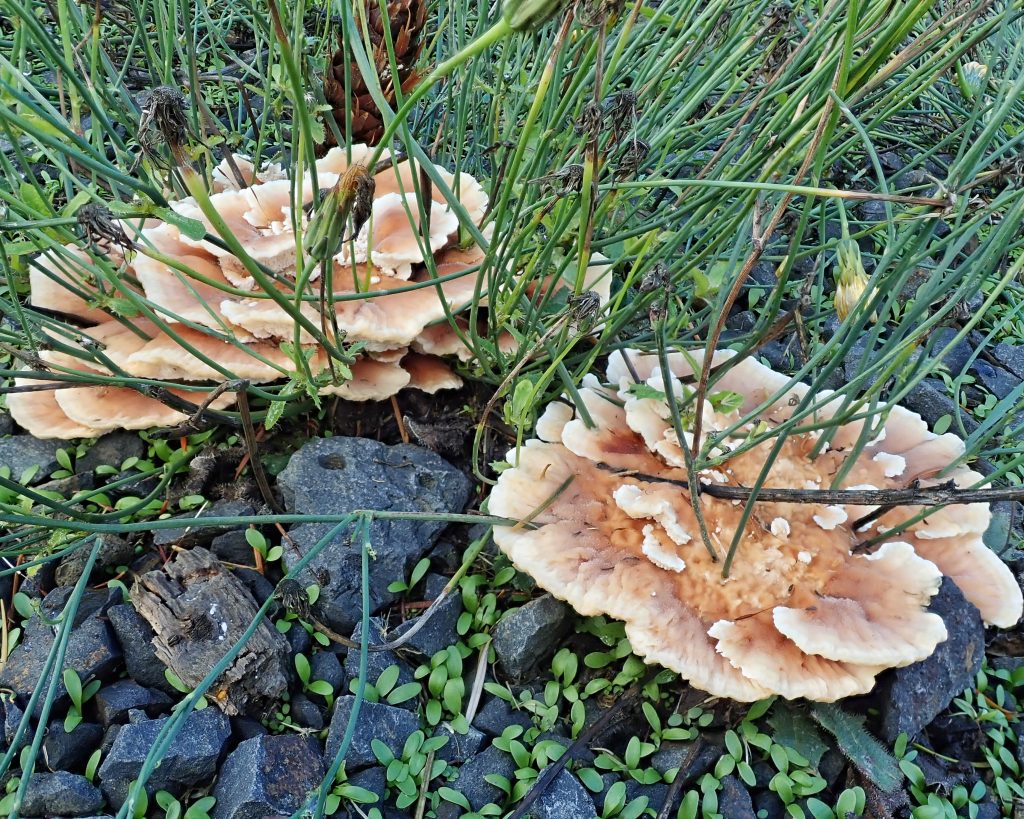
Dan, are all the photos you present yours unless otherwise noted? They are so often better than those in the reference material you include links to.
Thank you, Dwight! Yes, they are all mine. I did use one of David Wagner’s to illustrate the Bunchberry profile, but it was noted.
Hi. I’m in the U.K. and think I have this on my grass. Is my dog ok to be around it?
I don’t see why not, but it is considered inedible for humans, which usually means bad texture or taste, rather than toxicity. Does your dog make a habit of chewing on fungi?